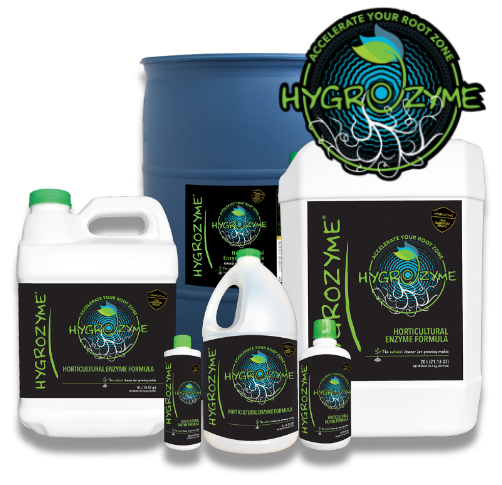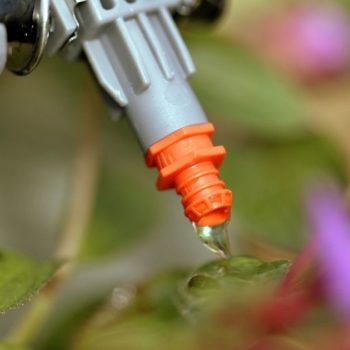
Plant Growth-Promoting Microbes 101
There is an entire world of beneficial microbes living in your soil, providing food for plants to grow faster, bigger, and healthier.
They balance nutrients to allow plants access to all the components they need for growth, including vitamins, minerals, enzymes, and small bits of growth hormones. They also promote strong and healthy roots, fight off pests and pathogens and help to break down macronutrients.
It’s not surprising that many plants share a symbiotic relationship with microorganisms, working with each other to create a thriving ecosystem for plant growth. Let’s have a closer look at these mighty little creatures and how they contribute to your crop.

Beneficial Bacteria have a Bounty of Benefits
Beneficial bacteria and microbes work symbiotically in the soil to feed the plants. Although they’re invisible, beneficial microbes are some of the most important elements in agriculture. They deliver nitrogen, protect roots, and fight off pathogens. Here we will go over a few ways in which beneficial bacteria and fungi help farmers grow healthy plants.

Bacteria
Bacillus – Often found living on the surface of plant roots, bacillus provides an array of functions. Most notably, these beneficial bacterias affects the solubility of phosphorus, potassium, and silicate and can protect plant roots from pathogens and parasites like pythium.
Pseudomonas – Plant-associated pseudomonas are found on plant surfaces and inside plant tissues. These microbes promote plant growth by suppressing pathogenic microorganisms, synthesizing growth-stimulating plant hormones, and promoting increased plant disease resistance.
Azotobacter – These aerobic, free-living soil microbes bind atmospheric nitrogen, which is inaccessible to plants, and release it as ammonium ions into the soil.

Fungi
Trichoderma – When this group of soil fungi encounters a fungal pathogen at the plant’s roots, it triggers the plant’s immune responses, which can increase the overall size of the root system and maximize yields.
Mycorrhizae – Mycorrhizae enhances nutrient and water uptake by exploiting a larger volume of soil than roots alone can do.
Beauveria – This natural insecticide controls a number of pests, including termites, thrips, whiteflies, aphids and various beetles.
Beneficial Bacteria have Two Modes of Action: Direct and Indirect

- Direct Mechanisms
Facilitating Resource Acquisition
Many agricultural soils today don’t contain the proper amounts of nitrogen, iron, and phosphorus needed for the growth of strong health plants. Beneficial bacteria can play a major role as an alternative to chemical sources of nitrogen and phosphorus.
Nitrogen Fixation
There are a variety of free-living beneficial bacteria that can fix nitrogen and provide it to plants promoting growth and yield.
Phosphate Solubilization
While the amount of phosphorus in soil is high, most of it is insoluble and therefore unable to support plant growth. This is where phosphate-solubilizing bacteria can help.
Sequestering Iron
Although iron is the world’s fourth most abundant element, it’s not readily assimilated by either bacteria or plants. However, bacteria can synthesize low-molecular-mass siderophores and facilitate iron uptake by microorganisms.
Modulating Phytohormone Levels
Many plants will attempt to adjust their endogenous phytohormones level to reduce negative effects by environmental stressors. While it works, rhizosphere microorganisms may also produce or modulate phytohormones and affect the plant’s hormonal balance and its response to stress.
Indole Acetic Acid (IAA)
Different IAA concentrations affect the physiology of plants in dramatically different ways. Notably, it can loosen plant cell walls and facilitate increased root discharge for additional nutrients to support the growth of rhizosphere bacteria.
Ethylene
Ethylene can affect plant growth and development, including promoting root initiation, fruit ripening, stimulating seed germination and activating the synthesis of other plant hormones.
- Indirect Mechanisms
Antibiotics and Lytic Enzymes
This is when antibiotics and enzymes work together to prevent the proliferation of plant pathogens fungi.
Competition
Competition between pathogens and non-pathogens can limit disease incidence and severity. For example, beneficial bacteria can rapidly colonize plant surfaces and use most of the nutrients, making it difficult for pathogens to grow. Siderophore from beneficial microbes can prevent some phytopathogens from acquiring sufficient iron, limiting their ability to proliferate.
Induced Systemic Resistance (ISR)
ISR-positive plants react faster and more vigorously to pathogen attacks by inducing defense mechanisms.
Benefits of Using Beneficial Microbes in Hydroponics and Soil
When your soil contains a diverse population of microorganisms, you’ll find pests are less of a problem.
By introducing beneficial bacteria, you allow for optimal nutrient uptake and help to stimulate and protect your plants’ roots, promoting the growth of strong healthy plants. Our powerful blend of concentrated, beneficial enzymes can support plant growth even further by supercharging microbes when converting dead root matter into simple sugars.

- On December 2, 2022


